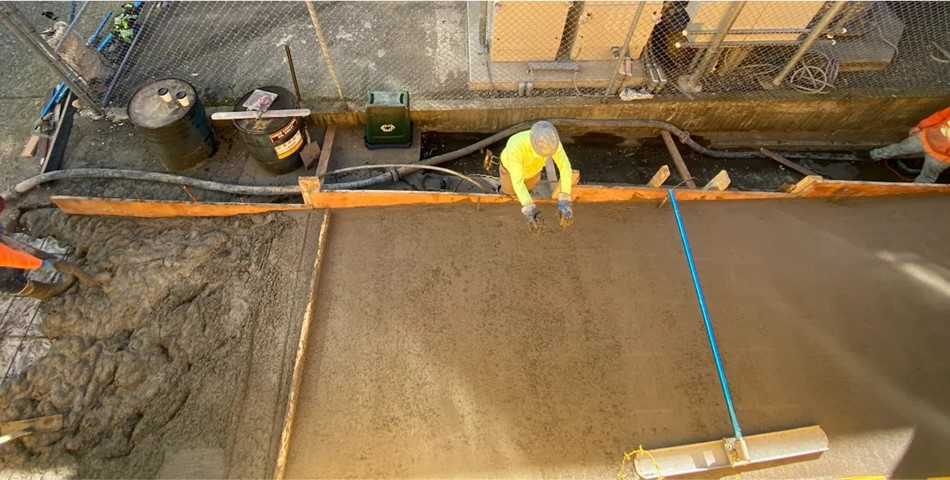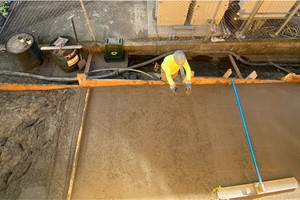C-Crete Technologies, a frontrunner in developing sustainable construction materials, has achieved a significant milestone by unveiling the world’s inaugural concrete primarily derived from basalt. This breakthrough substantially enhances the company’s array of environmentally conscious building solutions. On March 14, C-Crete Technologies completed a landmark pour at 7200 Woodlawn in Seattle, installing a 20-ton slab-on-grade foundation for an outdoor loading dock stem wall and a partial ramp, utilizing basalt to entirely replace Portland cement. This endeavor at Hubbard’s Corner builds upon prior successful ventures, totaling approximately 140 tons of C-Crete’s revolutionary cement-free concrete, integrating various raw materials, including zeolite and basalt.
Advantages and Composition of Basalt-Based Concrete By harnessing basalt as the primary binder and eliminating the necessity for Portland cement, C-Crete’s basalt-based concrete offers a significant environmental advantage. Basalt, abundant in silicon, aluminum, and calcium, provides a plentiful alternative to the limestone conventionally utilized in cement production.
Unlike Portland cement, a significant emitter of global CO2, basalt is a non-carbonate rock that can be pulverized into cement powder without emitting carbon dioxide. Moreover, the curing process of this innovative concrete sequesters CO2 from the atmosphere, further enhancing its environmental credentials.
Donald Davies, a seasoned construction industry executive and owner of the Seattle building Hubbard’s Corner, as well as chair of Building Transparency—a nonprofit dedicated to addressing embodied carbon in climate change—underscored the importance of this field trial. He highlighted how it transitions C-Crete’s basalt-based C1157 concrete from an experimental phase to readiness for pilot implementation in larger-scale projects. Davies emphasized the significance of this pour as a pivotal research and development milestone, showcasing the concept’s feasibility through practical application and real-world validation.
Real-World Application and Performance The successful pour at Hubbard’s Corner signifies a notable progression from laboratory research to real-world utilization. This basalt-based concrete not only meets but surpasses a compressive strength of 5,000 psi, exhibiting properties such as pumpability, workability, and durability closely aligned with traditional concrete, all while adhering to ASTM International standards for construction materials.
Allan Paull, a construction executive boasting 44 years of industry experience, expressed enthusiasm about the potential of basalt concrete to tackle numerous challenges, suggesting that its successful application could significantly drive societal advancement. He highlighted the innovative aspect of C-Crete’s ability to utilize various feedstocks without requiring a vitrification process, which typically demands substantial energy. Paull finds this aspect particularly promising as it signifies a departure from energy-intensive production methods.
Additionally, he speculated that if the product undergoes comprehensive testing and proves successful, it could be swiftly embraced by the construction industry. Paull drew parallels to the steel industry’s transition from coal-powered blast furnaces to more efficient electric arc furnaces, implying that cement companies might similarly be eager to adopt basalt concrete technology due to its potential benefits and efficiency enhancements.













